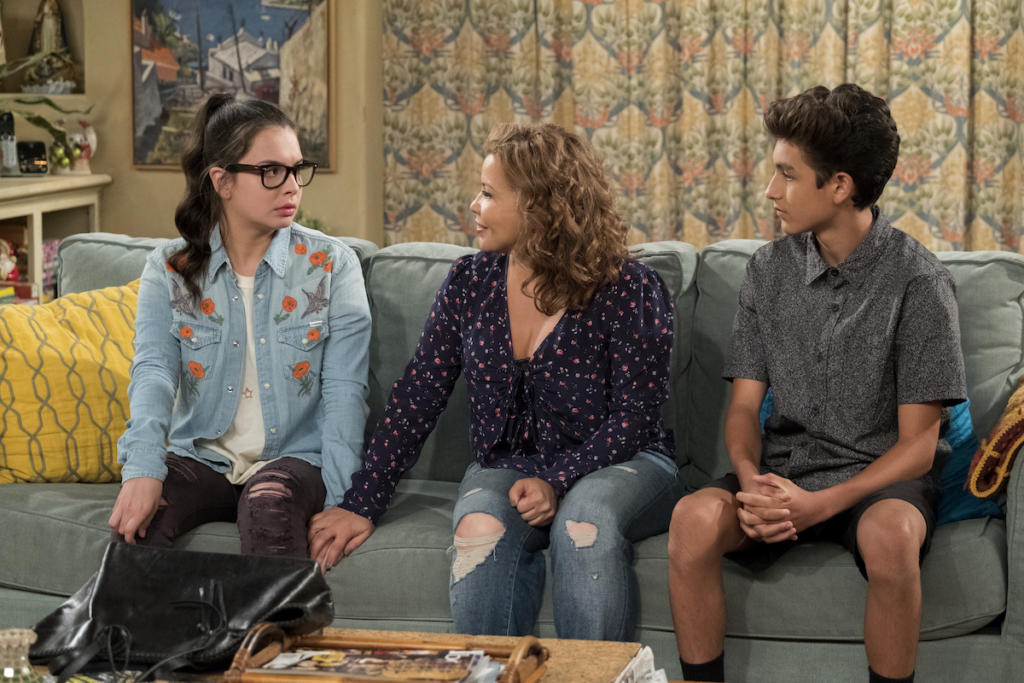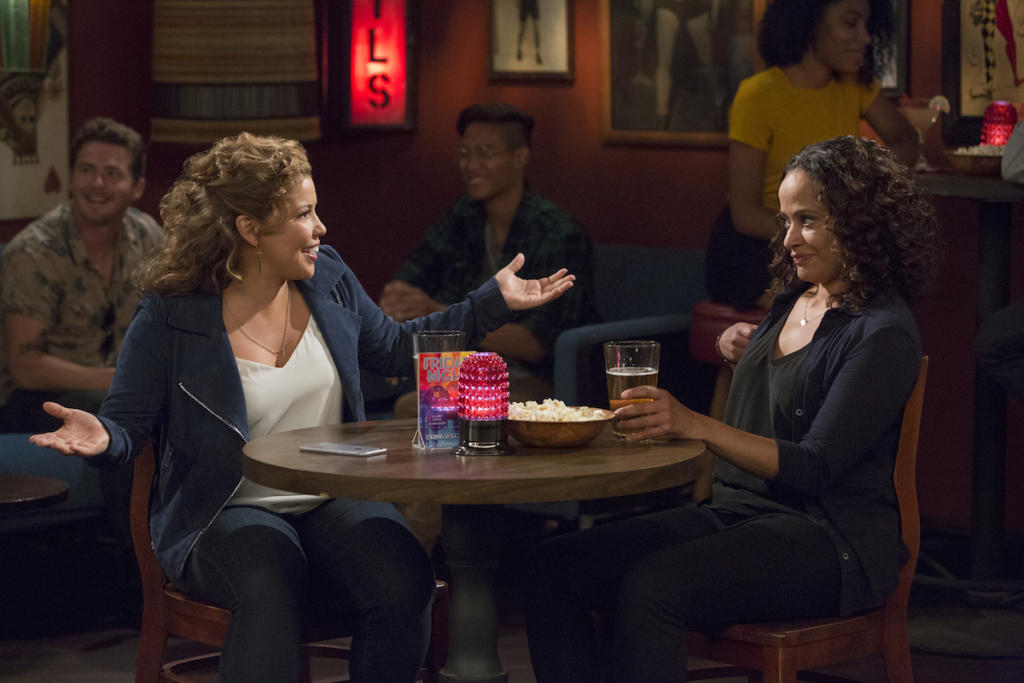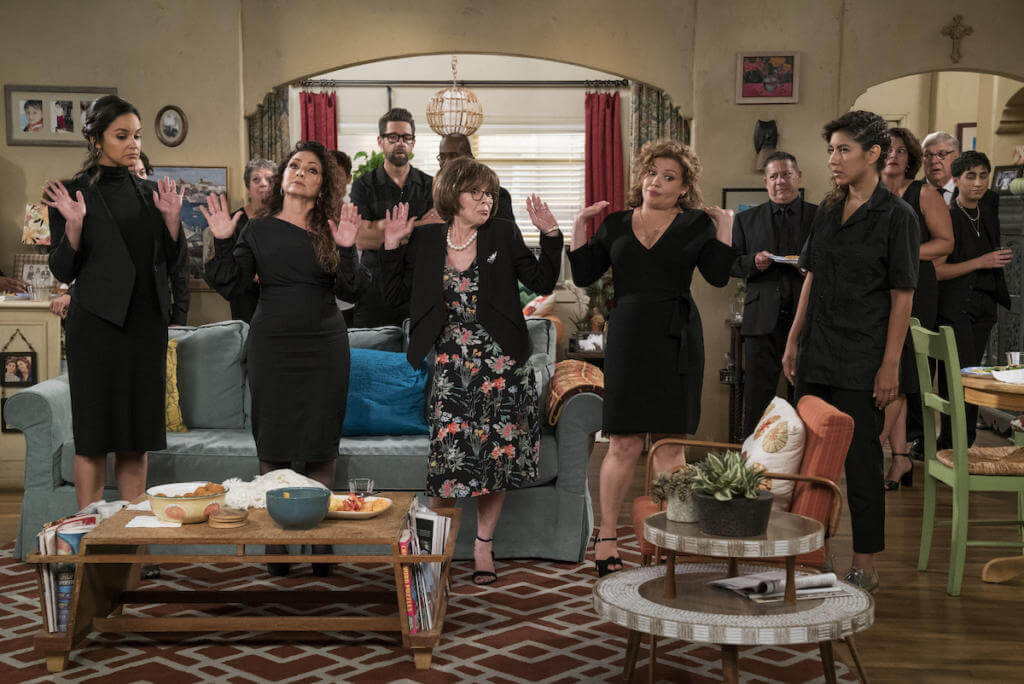The concept of One Day at a Time is simple. A single mom, two kids, a helpful grandmother, and a Schnieder. But just like the original concept was deeper and addressed the problems of its era, the reboot tackles the life of Cuban immigrants in a time when people scream hateful things and want to build a wall.
Previously …
Season one of One Day at a Time was set in the frame of a Quinceañeras in the modern time. It was a story about marrying the old and new, about determining who you are in the midst of changing times. Becoming and growing into the you of 2017, finding yourself, and going forward. The goal of a Quinces is the step from childhood to adulthood. For many of the characters on the show, it was the step from ‘everyone’ into that of their own unique individuals.

In season two, I felt initially like the show struggled, because the arc was more subtle. It wasn’t until a few episodes in that we learned the visible arc was “becoming a citizen.” It was an interesting plot line to follow. My mother, like Schnieder, is a Canadian who became an American citizen. While she has no horrifying Zamboner story in her past, she did warn me not to throw the chairs onto the ice at a hockey game. Oddly specific, Mom.
However, it’s in little moments like that where One Day at a Time excels. It’s in a small joke about a bowling ball hitting someone in the head, a mention that Lydia is someone’s great love, and in a recording of Scandal, where we are reminded the Alvarez family is ours too. They’re messy, they’re imperfect, but they’re like our family can be. Maybe someone didn’t go to a funeral, maybe someone walked away from their daughter at her Quinces. They don’t always do what’s right, but they try to find their way.
That’s why, when rewatching season two, I realized the journey was less “who is an American?” and “who are we?”
Alex has to struggle with his visible minority status, a reality he was unprepared for. Elena will have to live with people who are going to hate her and not understand her for being who she is, even her own father. Penelope realizes that in order to be herself, she must stay on anti-depressants. And Lydia has to learn how to remain herself while becoming an American citizen and letting go of the home she fled decades before.
Of course, the answer always is found in their family. They misstep, they hurt each other from time to time, but their love and the fact that they care for each other keeps them together. Even Schnieder.
Season Three
Unlike season two, I wasn’t able to go to any tapings. I have to up my bribe game clearly to move the schedule. But like you, I’ve seen the trailer:
I’ve also seen season three, otherwise this review would be pretty short!
Even just looking at the trailer, we can see how the characters are growing. Alex experiments with marijuana, Penelope gets a boyfriend maybe, Lydia builds a bridge with her sister (played by Gloria Estefan no less), Elena tries to be more respectful of Syd’s non-binary status and also moves into Phase 2 lesbian, with Doc Martens and ripped jeans.

Of course, Elena hasn’t changed much at all, still missing the social cues and being all 100% out rainbow gay, and that is part of why we love her so much. She loves shows we love, like Wynonna Earp and Battlestar Galactica. Our nerdy little lesbian grows and becomes exactly who she is. Changing without changing her essence. Her character arc is a great example of One Day at a Time returning to the formula that made season one work so well.
There is an arc for the third season, and you feel like each episode properly leads into the next. For binge-able TV, it’s a must to have a thread from each episode carry through. You have to touch on a plot in episode 2 and have it picked up again in episode 4, because the viewers are going to be watching all 13 episodes in three days or even one long afternoon on the couch.
The way we watch TV has changed, and One Day at a Time has grasped how to take the classic sitcom format and turn it into a show we want to watch all in a row like that. There’s a perfection that is not found in the ‘to be continued’ but in the partial conclusion of a story line. It reminds us that the story doesn’t end even when we reach a pinnacle. It’s just a moment to rest and to laugh and to climb again and again.
The Threads Come Together
The third season starts out with a funeral, and my first thought was “Imagine if they’d ended last season just with Berto asking that question…” Thankfully the show runners aren’t as evil as I am, but the funeral begins to heal the rift between Mirtha and Lydia only to rocket us into the next problem.
What could go wrong at an art museum? Or an auction? How life changing could soft cheese be? Or a pair of shoes? Or a hotel room? Why doesn’t Penelope talk to her cousins? Is Alex going to get a girlfriend? Will Syd and Elena last? Will Penelope find the right kind of guy? Will we ever find out Schnieder’s first name?
The interwoven storylines gel in a chemical reaction that make you want to keep watching until you’ve seen it all. They drop a mention in an episode that shifts into the focus of another, two or three down the line. The story you think you’re getting is slightly different than the one you do get. The reveals are from different characters than you might expect. The hero is the fool, the fool the hero, and in the end we question what happiness is.
That’s the magic of this show. They take small things, a moment that everyone has, and remind us how much they make of us. And in season three, the questions of what are we and who are we change to what are we together? We know that family supports us, but our family and our loves make us happy. So where are we all, ultimately, happy?
You’ll have to watch season three to find out.

Elena, Penelope, Alex 
Penelope and Ramona 
The extended Alvarez Clan
PS: Stephanie Beatriz is exactly as awesome as you think she is and we love Pilar. Also there’s a special guest star near the end of the season you’ll have to see to believe.